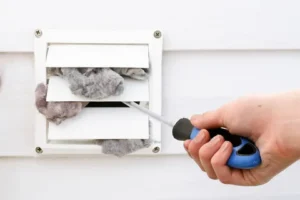
If you’re a small animal owner, you know that your furry friend’s health goes beyond just providing food and water. One aspect that is often overlooked is mental stimulation. Just like humans, small animals require mental engagement to stay happy and healthy. Without it, they may become bored, anxious, or even develop undesirable behaviors. Thankfully, small animal toys are a great way to promote mental stimulation and improve your pet’s overall well-being.
In this guide, we’ll explore how small animal toys can provide essential mental stimulation, improve your pet’s behavior, and keep them entertained. From interactive toys to chew toys, we’ll cover everything you need to know to enrich your pet’s life. Whether you have a rabbit, guinea pig, hamster, or another small animal, choosing the right toys will help ensure they stay mentally sharp and happy.
Why Mental Stimulation Matters for Small Animals
Small animals are brilliant creatures that need mental challenges to thrive. Without proper mental stimulation, they can become bored and stressed, which may lead to behaviors such as excessive chewing, digging, or even aggression. It’s essential to recognize that, like people, small animals need more than just physical exercise to stay mentally healthy.
How Boredom Affects Small Animals
When small animals are left without sufficient stimulation, they may start exhibiting negative behaviors. Rabbits, for example, might chew on inappropriate objects, guinea pigs may become less active, and hamsters might become more agitated in their cages. Long-term boredom can also contribute to anxiety and depression, which can impact your pet’s physical health.
The Link Between Mental Stimulation and Behavior Improvement
Providing toys that encourage problem-solving, interaction, and creativity can make a world of difference. Mental stimulation has been shown to improve behavior, reduce stress, and provide an outlet for pent-up energy. Enriching your small animal’s environment with toys designed for mental engagement helps them lead happier, healthier lives.
Types of Small Animal Toys That Promote Mental Stimulation
Several types of small animal chew toys can effectively promote mental stimulation. Here are some of the most popular and beneficial options:
- Interactive Toys
Interactive toys are designed to engage your pet actively, whether they need to press buttons, move pieces around, or figure out how to release a treat. These toys can provide hours of entertainment and mental engagement for small animals. For example, treat-dispensing toys challenge pets to work for their food, a natural way to stimulate their minds. - Puzzle Toys
Puzzle toys are fantastic for developing problem-solving skills in small animals. These toys are often designed with hidden compartments that hold treats or snacks. To access the treats, your pet needs to figure out how to manipulate the toy. This type of engagement helps keep your small animal mentally sharp while also providing them with a tasty treat as a reward. - Chew Toys and Their Benefits
Chew toys are essential for most small animals, especially rodents like hamsters and guinea pigs. Chewing helps keep their teeth healthy and serves as a natural outlet for their instincts. When you choose chew toys designed for mental stimulation, you’re giving your pet both a physical and psychological workout. For example, wooden toys with intricate designs or chews that require your pet to figure out how to nibble them provide both entertainment and enrichment.
How to Choose the Right Mental Stimulation Toys for Your Pet
Choosing the right small animal toys requires considering several factors related to your pet’s needs and preferences. Here’s what to keep in mind:
Consider Your Pet’s Species
Different small animals have various levels of intelligence and specific needs when it comes to mental stimulation. For example, rabbits love to explore and interact with their surroundings so they may enjoy large maze-style toys. Guinea pigs, on the other hand, are social animals that may benefit from toys they can explore in groups, such as tunnels or treat-dispensing toys. Hamsters often enjoy more solitary toys, such as chew items and puzzle feeders.
Age and Activity Level Matter
A young, energetic pet may require toys that challenge them more frequently, whereas an older pet might prefer simpler, less complex toys. Young animals are often more curious and willing to engage with new toys, so providing them with a variety of mental stimulation is essential. Senior pets may benefit from toys that offer gentle stimulation, like soft chew toys or interactive toys with slower-moving parts.
Variety and Novelty
Small animals can get bored quickly if they are presented with the same toys repeatedly. To keep them engaged, it’s essential to rotate toys regularly and introduce new options. This helps maintain their interest and prevents them from becoming disinterested in their toys. Keep in mind that novelty plays a significant role in mental stimulation, so swapping out toys can be a fun way to refresh their environment.
Benefits of Small Animal Toys for Mental Health
Small animal toys are not just for entertainment—they also offer a variety of mental and physical health benefits. Here’s how they help:
- Reducing Stress and Anxiety
Engaging with toys can help your pet reduce stress and anxiety. For small animals, boredom often leads to stress, so providing toys that promote interaction can be a calming experience. Activities such as chewing, solving puzzles, and discovering hidden treats offer mental relaxation and fulfillment. - Improving Physical Activity
Many small animal toys encourage movement, which is crucial for physical health. Interactive toys that require your pet to run or climb can help improve their fitness levels and reduce the risk of obesity. For example, running balls and exercise wheels are great for hamsters, while rabbits enjoy hopping through tunnels. - Enhancing Bonding and Interaction
Toys aren’t just for your pet—they can also improve the bond between you and your small animal. By spending time together playing with toys, you can form a stronger connection with your pet, which helps reduce anxiety and fosters trust.
How Often Should You Provide Mental Stimulation for Small Animals?
Providing mental stimulation should be a daily activity. However, the frequency and duration depend on your pet’s needs. Some small animals may benefit from 10–15 minutes of interactive play per day, while others may need more time to engage fully. Here’s how to incorporate toys into your pet’s daily routine:
- Create a Play Schedule: Set aside time each day for toy interaction. This helps your pet establish a routine and ensures they receive sufficient mental stimulation.
- Rotate Toys Regularly: Keep the playtime fresh by rotating toys every few days. This keeps your pet’s environment exciting.
- Observe Your Pet: Pay attention to how your pet responds to toys. If they seem disengaged, try a new type of toy or increase the playtime.
Conclusion
Small animal toys are essential for your pet’s mental well-being, providing stimulation that helps prevent boredom, reduces stress, and promotes healthy behaviors. Choosing the right toys for mental engagement is crucial for keeping your pet entertained and mentally sharp. By considering your pet’s species, age, and preferences, you can select the perfect toys to enhance their quality of life.
Providing your small animal with regular mental stimulation through toys not only improves their mood but also helps with their physical health. With the right balance of fun and functional toys, you can ensure your pet’s happiness for years to come.
FAQs
- What types of small animal toys are best for mental stimulation?
Puzzle toys, interactive toys, and chew toys are great for providing mental stimulation. - How often should I provide mental stimulation for my small animal?
Ideally, small animals should have daily access to stimulating toys. Aim for 10–15 minutes of interactive playtime each day. - Can mental stimulation toys help reduce my pet’s anxiety?
Yes, toys that encourage interaction and problem-solving can reduce stress and anxiety by keeping your pet engaged. - What should I do if my pet is not interested in toys?
Try rotating different types of toys and introducing new ones regularly. You can also try adding treats to encourage play. - Are there any risks associated with giving small animals too many toys?
While it’s essential to provide mental stimulation, make sure to keep the toys safe and avoid overwhelming your pet with too many choices at once. Rotate them to maintain their interest.
Latest Research and News on Pet Supplies and Products
According to the American Pet Products Association (APPA), the demand for small animal toys has been steadily increasing as pet owners become more aware of the importance of mental health for their pets. The pet industry is evolving, with more focus on enriching toys that provide physical and mental benefits. For more details on this growing trend, visit APPA for the latest research and product trends in the pet industry.




